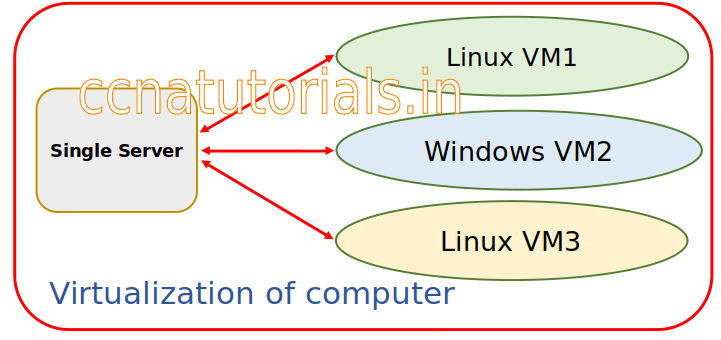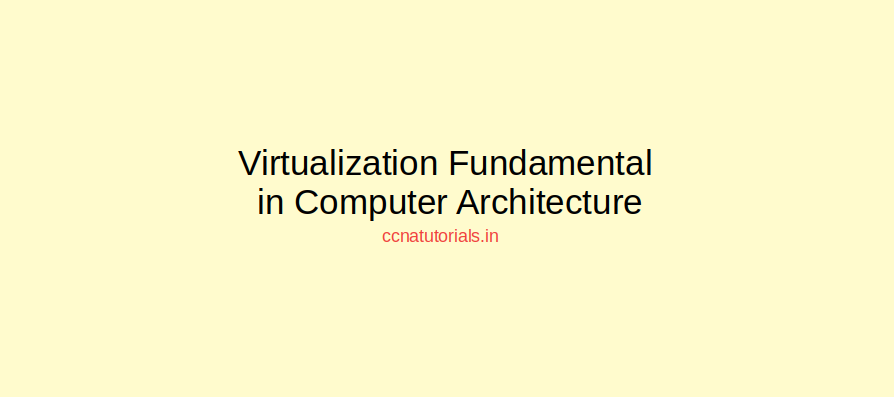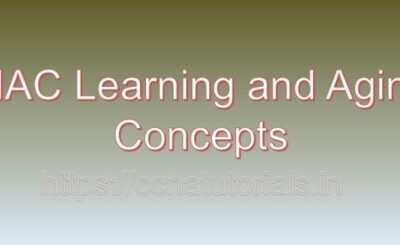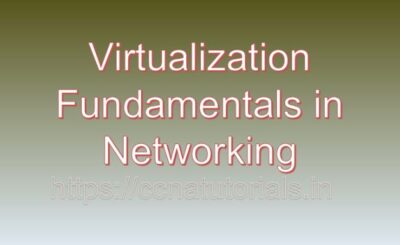In this article I describe the Virtualization Fundamentals in Computer Architecture for CCNA Exam. We know the servers works to provide various services to its clients. The server are generally installed in a data center at some unique place. The servers are built up with high end hardware a numbers of processor and a large memory for RAM. Generally the data storage is done separate from the servers in any SAN or NAS. SAN and NAS are storage devices which can access over the network from any server or computer.
A server is capable to provide multiple services in a network. In a establishment of data center we need multiple services so we need multiple servers. It is very expensive and also very difficult to maintain multiple hardware machines. The machines need power, space, wiring etc. Virtualization is the solution to use a single machine for multiple services. In this article I describe the Virtualization Fundamentals in Computer Architecture for multiple services from a single machine.
What are the Virtualization Fundamentals in Computer Architecture
Virtualization divided a single server into multiple virtual computers by using the hardware of the server like processor, RAM and storage memory etc. The virtual computers known as virtual machines. Every virtual machine behave like a physical computer with independent hardware and operating system. We can use these virtual machines for various purpose like DHCP, DNS, FTP and web servers. For large applications like mail server we select independent physical machines. So we can say the virtualization is the perfect use of a single machine.
In big data centers which offer to host the website to common people for public use. The cloud computing is used in big data centers. Cloud computing is works on totally virtualization of servers. The big data center use a single high end servers to host multiple web sites which are accessible from any public IP via multiple authentication methods.

The user paid for the services which are required to him only. Suppose a web site required only 5 GB space to host then the user will paid only for 5 GB space to the service provider. He do not need to paid for whole memory setup SAN or NAS. This is done because of Virtualization of computer hardware only.
Some common advantages of virtualization in computer architecture.
There are many advantages of virtualization in computer architecture. Lets discuss here some important advantages related to Virtualization Fundamentals in Computer Architecture.
Perfect utilization of hardware or resources
Every service or application required a separate computer or server. It is very difficult toe maintain separate machines for each application or services. Virtualization make it easy to use multiple servers from a single physical machine without interfere each other. It save the money and space in the data center. This provides the full utilization of the hardware available in the server.
Time consumption is less in installation of multiple computers
Each application needs a separate machine for working in network. When we use virtualization multiple machines can be ready with a instance of time. So the time consuming in purchasing, installation and configuring multiple machines become less. You need to install only a single hardware for multiple services in the network.
The downtime can be reduces to provide various services
We can configure multiple virtual machines in a single server or computer redundant to each service. This provides the minimal down time of services as each virtual machine is separate from each other and uses its own memory and processor. So as each machine have its redundant system. In case of down time the redundant machine will take over the failure system and working well.
Single Management and easy maintenance
Virtualization provides multiple computers in a single physical machine. So the administrator of the physical machine can manage the virtual computers of the machine. I mean the memory management, cpu utilization, hard drive space allotment, backup and restoration etc. These all task can be perform by a single administrator. So the management and maintenance of multiple servers become easy by using the virtualization in computer architecture.
Desktop Virtualization Fundamental in Computer Architecture
Desktop virtualization provides multiple desktops on a single physical machine. The CPU, Memory can be divide according to the requirement or virtual desktop. The desktop virtualization are of two types VDI and LDV.
VDI stands for Virtual Desktop Infrastructure. VDI can provide multiple desktops in the form of virtual machine from a high end server. The desktops can be used by thin clients in the network. The work done by each thin client will be saved centrally in the server. The thin client do not require any operating system installation in it. The thin client can use the virtual desktop by some authentication methods like username and password some time bio-metric authentication also used to access these desktops.
LDV stands for Local Desktop Virtualization. LDV provides the virtual desktop from a local desktop. I mean a user can create multiple virtual machines from his own local desktop. There is no need of access to any server in the data center.
Network Virtualization Fundamental in Computer Architecture
Network virtualization is require to provide the network connectivity to each virtual machine. Each virtual machine have its own network adopter which is virtual. Network virtualization provide the connectivity to the virtual machines to access the physical network. The network IP address is plan accordingly so each virtual machine can access the internet or network.
The virtual network is generally known as SDN (Software Defined Networking) which control the speed and connectivity to each virtual machine. SDN also control the network routing protocols and other functions. Another term come into picture NFV (Network Function Virtualization ) which provide specific tasks like load balancer, firewall etc to the virtual network.
Application Virtualization Fundamental in Computer Architecture
Applications required separate servers to provide the services. The physical machines divided into virtual machines which can be use to host the application. So the client can access the application from the virtual servers. Server based application runs totally on a server that allow its user interface to the client for example an web application. Similarly the local application virtualization can allow a client to run the entire application on its own end.
Data Virtualization Fundamental in Computer Architecture
Date is use by multiple users and applications from multiple locations. So the data virtualization required in respect of application, source, location etc. A user can access the data only which is require to him. Similarly an application is allow to use a part of the data by doing data virtualization. The data can be distribute to use location wise. In the local area of data center the data usage is maximum in respect of the client location.
Storage Virtualization Fundamental in Computer Architecture
Every virtual computer needs its own space to keep the files or data. The storage media can be SAN or NAS. The administrator is responsible to allot the required data storage to each virtual machine as per requirement. This is known as storage virtualization. The best example of storage virtualization is cloud storage. Every user of cloud storage need different size of space and he will paid only for that. So it is not possible to allot all the users same space in cloud storage. We have to make partitions of different size to allot the different users. This is known as storage virtualization.
CPU Virtualization Fundamental in Computer Architecture
CPU is require by every virtual machine for processing. When we do virtualization of a high end server the CPU is also require to virtualization. This make it possible the working of the virtual machines perfectly. CPU virtualization allocates the single physical CPU into multiple Virtual CPU’s for different virtual machines. It is totally software define and manage by the softwares. Very similar to CPU, GPU virtualization done by the softwares for different virtual machines.
Virtual machine and Dual boot in Virtualization Fundamental in Computer Architecture
In Virtualization Fundamental in Computer Architecture the Dual boot operation comes in the picture. I mean if we use two OS on a single Desktop by using hyper convergence then it is possible to use both at a same time. This is possible because of virtualization of the desktop. Before the virtualization Dual Boot option generally used for the desktops. Suppose a machine required to operate on windows and some time on Linux. The Dual boot option make it possible to use a single machine for two different Operating Systems. We need to boot the machine manually and select the required OS to load when the system power ON.
Virtual Machines and Containers in Virtualization Fundamental in Computer Architecture
Virtual Machines are explained in above paragraphs. The containers are some applications which provide the facility to run the different program on a single machine. The programs can be any language code, tools, system libraries etc. Containers help to create cloud natives, distributed applications and some different application on the same environments.
In this article I describe the Virtualization Fundamental in Computer Architecture for CCNA exam. I hope you found this article helpful. For any query or suggestion you can drop a comment below to contact us. Your comments are always welcome by us.







I always spent my half an hour to read this web site’s articles or reviews daily along with a mug of coffee.
Your site is very helpful. Many thanks for sharing!
I’m just commenting to let you be aware of what a great encounter my friend’s daughter experienced visiting yuor web blog. She mastered lots of details, which included how it is like to have a marvelous teaching nature to let the mediocre ones effortlessly learn selected multifaceted topics. You truly did more than her desires. Many thanks for coming up with such essential, dependable, educational and even easy tips about the topic to Tanya.
Please check the text, because you made many written mistakes and so that, it is hard to concentrate and get the idea. By the way, the best information I encounter there related to topic.
Regards!